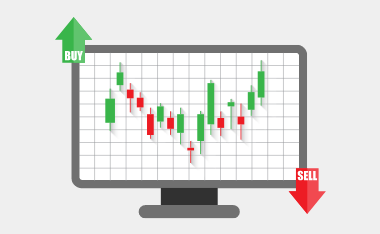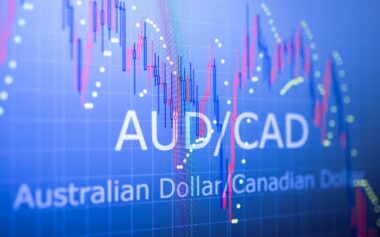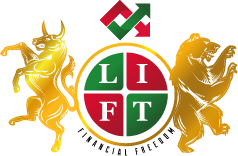Forex Trading and Interest Rates

Interest rates are crucial in forex trading, influencing currency values, market dynamics, and trading strategies.
Forex traders closely monitor interest rate decisions and their impact on the currency markets.
This article will explore why interest rates are essential for forex traders and how they can affect trading decisions and market conditions.
Understanding Interest Rates
Interest rates, set by central banks or monetary authorities, represent the cost of borrowing money or the return on investment.
They determine the rate at which banks lend to one another and can significantly impact economic conditions and financial markets.
In forex trading, interest rates directly influence the value of currencies.
Higher interest rates attract foreign capital, increasing demand for a currency and potentially strengthening its value.
Conversely, lower interest rates can discourage foreign investment, leading to a decrease in currency demand and a potential decline in value.
Monetary Policy and Currency Valuation
Central banks use interest rates as a strategy to manage their respective economies and achieve specific policy objectives.
Central banks aim to control inflation, stimulate economic growth, or maintain price stability by adjusting interest rates.
Forex traders carefully analyse changes in interest rates as they can significantly impact currency valuation.
When a central bank raises a country’s interest rates, it signals a tighter monetary policy. It often leads to an increase in currency value.
Traders may anticipate such rate hikes and adjust their trading strategies accordingly.
Conversely, when a central bank lowers a country’s interest rates, it signals an expansionary monetary policy, which can weaken a currency’s value.
Forex traders may consider this when making trading decisions and adjust their positions accordingly.
Interest Rate Differentials and Carry Trades
Interest rate differentials between countries can create opportunities for carry trades, a popular strategy in forex trading.
Carry trades involve borrowing a currency with a lower interest rate and investing in a currency with a higher interest rate.
For example, the interest rates in Country A are higher than in Country B.
In that case, traders may borrow in Country B’s currency (with the lower interest rate) and invest in Country A’s currency (with the higher interest rate).
This strategy allows traders to profit from the interest rate differential while benefiting from any potential currency appreciation.
Forex traders closely monitor interest rate differentials and the potential for carry trades, as they can impact currency flows and create trading opportunities.
Impact on Interest Rates on Forex Market Volatility
Interest rate decisions by central banks can lead to increased market volatility.
Traders anticipate and react to these decisions, resulting in significant price movements in the currency markets.
When central banks announce unexpected interest rate changes or provide forward guidance that differs from market expectations, it can lead to sharp movements in currency pairs.
Volatile market conditions offer both opportunities and risks for forex traders.
Some traders thrive on high volatility and seek to profit from short-term price fluctuations.
In contrast, others may adjust their trading strategies to manage increased risk.
Economic Indicators and Forex Trading Interest Rates
Economic indicators often act as a barometer for interest rate decisions.
Forex traders closely monitor key economic data releases, such as inflation rates, employment figures, and GDP growth, as they provide insights into the overall health of an economy.
Positive economic data can increase the likelihood of interest rate hikes. In contrast, negative data may suggest the possibility of interest rate cuts.
Forex traders analyse these indicators in combination with other factors to make informed trading decisions and anticipate potential changes in interest rates.
Central Bank Communications
In addition to interest rate decisions, forex traders pay close attention to central banks’ communication and guidance.
Central bank officials’ speeches, statements, and press conferences can provide insights into future interest rate actions and monetary policy.
Forex traders analyse central bank communications to gauge the stance of policymakers and assess the potential impact on currency values.
A shift in tone or indications of future policy changes can influence market sentiment and lead to adjustments in trading strategies.
Utilising Shifts in Forex Trading Interest Rates Strategies
Shifts in interest rates can be valuable signals for forex traders, providing insights into potential market movements and opportunities.
Traders incorporate interest rate changes into their strategies to capitalise on currency valuation shifts and capitalise on the resulting market dynamics.
We will explore how traders can use shifts in interest rates as part of their trading strategies.
Carry Trade Strategy
One popular strategy that traders employ based on interest rate differentials is the carry trade strategy.
As mentioned earlier, the carry trade involves borrowing a low-interest-rate currency and investing in a high-interest-rate one.
This strategy captures the interest rate differential while potentially benefiting from currency appreciation.
Traders utilising the carry trade strategy monitor interest rate changes to identify currency pairs with favourable interest rate differentials.
They seek to profit from the interest rate spread and the potential for currency appreciation.
By carefully selecting currency pairs and managing their positions, traders can capitalise on the interest rate differentials and generate potential returns.
Forex Trading Interest Rate Expectations
Shifts in interest rates also provide traders with insights into future market expectations.
By analysing the stance and guidance of central banks, traders can anticipate potential interest rate changes and adjust their trading strategies accordingly.
For example, suppose a central bank signals a possible interest rate hike in the near future.
In that case, traders may position themselves to take advantage of the potential currency appreciation.
They may enter long positions in the currency, expecting it to strengthen as interest rates rise.
Conversely, if a central bank hints at a potential interest rate cut, traders may consider short positions in the currency, anticipating a potential decline in its value.
By aligning their trading strategies with interest rate expectations, traders aim to capitalise on the market movements driven by these shifts.
News Forex Trading and Interest Rates
Shifts in interest rates can trigger significant market volatility, providing opportunities for news trading.
News traders monitor central bank announcements, interest rate decisions, and accompanying statements to identify potential trading opportunities.
When central banks surprise the market with unexpected interest rate changes or provide forward guidance that differs from market expectations, it can lead to sharp price movements in currency pairs.
News traders react quickly to these events, entering positions to profit from the initial market reactions.
However, news trading carries inherent risks, as market reactions can be volatile and unpredictable.
Traders must carefully manage risk by utilising appropriate risk management strategies such as stop-losses and implementing effective trade execution strategies.
Impact of Interest Rates on Currency Correlations
Shifts in interest rates can also impact currency correlations.
Currency pairs that involve currencies with diverging interest rate policies can experience changes in their correlation patterns.
For example, if the interest rates of two currencies in a currency pair were previously closely aligned, but one central bank decides to raise rates.
At the same time, the other maintains or lowers rates, which can lead to a shift in the correlation between the currencies.
Traders who monitor these correlations can adjust their trading strategies to take advantage of these changes.
By analysing the interplay between interest rates and currency correlations, traders can identify opportunities for diversification and hedging within their portfolios.
Fundamental Analysis
Interest rate shifts are an integral component of fundamental analysis, which involves assessing the overall health of economies and making trading decisions based on economic indicators, policy changes, and market trends.
Forex traders who employ fundamental analysis consider interest rate shifts as one of the crucial factors affecting currency values.
By analysing interest rates alongside other economic indicators such as inflation, employment figures, and GDP growth, traders gain a more comprehensive understanding of the market dynamics.
This analysis helps traders make informed trading decisions, identify potential trading opportunities, and manage their positions based on the fundamental factors driving the currency markets.
The Final Word on Forex Trading and Interest Rates
Interest rates are vital for forex traders, as they influence currency values, market dynamics, and trading strategies.
Changes in interest rates can impact currency valuation, create opportunities for carry trades, and affect market volatility.
Forex traders closely monitor interest rate decisions, economic indicators, and central bank communications to make informed trading decisions and anticipate potential market movements.
Understanding the role of interest rates in forex trading is essential for navigating the complexities of the currency markets and developing effective trading strategies.
Shifts in interest rates provide forex traders with valuable insights and opportunities to refine their trading strategies.
Traders can utilise interest rate differentials for carry trades, align their positions with interest rate expectations, engage in news trading around interest rate announcements, leverage changes in currency correlations, and incorporate interest rates into their fundamental analysis.
It is essential for traders to stay aware of central bank decisions, economic indicators, and market expectations to effectively incorporate shifts in interest rates into their trading strategies.
By staying attuned to interest rate dynamics and their impact on currency markets, traders can enhance their decision-making process and potentially increase their chances of success in the forex market.
More Information
For more trading term general definitions, visit our A to Z of Forex Trading
To look at these concepts in action, please visit our sister site, Latest Forex Rates
What to do Next
If you have more questions or need further guidance, don’t hesitate to reach out to us at The Trading Coach International for personalized coaching and support.
If you would like to learn more about trading forex profitably and what steps you can take next to get on the right track to build your Lifestyle Income From Trading, you can book an no obligation, Free Strategy Call with our Lead Trading Coach by clicking on THIS LINK
Disclaimer
The information, strategies, techniques and approaches discussed in this article are for general information purposes only. The Trading Coach International does not necessarily use, promote nor recommend any strategies discussed in this article. The information in this article may not be suitable for your personal financial circumstances and you should seek independent qualified financial advice before implementing any financial strategy. The Trading Coach International is not a financial advisor and does not have AFS registration.


















